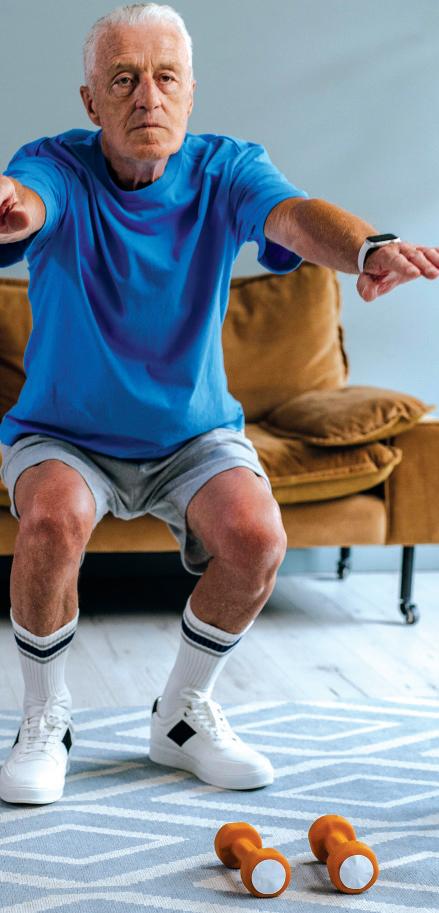
2 minute read
STEPS TO TAKE TO PREVENT FALLS
If you take care of your overall health, you may have a lower chance of falling. Most of the time, falls and accidents don’t just happen for no reason. Here are a few tips to help lessen your risk of falls:
Stay Physically Active
Plan an exercise program that is right for you. Regular exercise improves muscles and makes you stronger. Exercise also helps keep your joints, tendons, and ligaments flexible. Mild weight-bearing activities, such as walking or climbing stairs, may slow bone loss from osteoporosis, a disease that makes bones weak and more likely to break.
Try Balance And Strength Training Exercises
Yoga, Pilates, and Tai chi can all improve balance and muscle strength. You can also try lifting weights or using resistance bands to build strength.
FALL-PROOF YOUR LIVING SPACE
The easiest change is to remove drop carpets. It is easy to trip over the loose edges.
Have Your Eyes And Hearing Tested
Even small changes in sight and hearing are linked to an increased risk for falls. When you get new eyeglasses or contact lenses, take time to get used to them. Wear your glasses or contacts as your eye doctor advises. If you have a hearing aid, be sure it fits well and wear it.
FIND OUT ABOUT THE SIDE EFFECTS OF ANY MEDICINES YOU TAKE
If a drug makes you sleepy or dizzy, tell your doctor or pharmacist.
Get Enough Sleep
If you are tired, you are more likely to fall.
Avoid Or Limit Alcohol
Too much alcohol can lead to balance problems and falls, which can result in hip or arm fractures and other injuries.
Stand Up Slowly
Getting up too quickly can cause your blood pressure to drop. That can make you feel wobbly.
Use An Assistive Device If You Need Help Feeling Steady When You Walk
Using canes and walkers correctly can help prevent falls. If your doctor tells you to use a cane or walker, make sure it’s the right size for you. Walker wheels should roll smoothly.
If you borrow walking support equipment from a friend, ask your health care provider to make sure the equipment is the correct size and is safe to use. This is exceptionally important when you’re walking in areas you don’t know well or where the walkways are uneven. A physical or occupational therapist can help you decide which devices might be helpful and teach you how to use them safely.
Take Extra Caution When Walking On Wet Or Icy Surfaces
These can be very slippery! Use an ice melt product or sand to clear icy areas by your doors and walkways.
Keep Your Hands Free
Use a shoulder bag, fanny pack, or backpack to leave your hands free to hold on to railings.
Choose The Right Footwear
To fully support your feet, wear nonskid, rubber-soled, low-heeled shoes. Don’t walk on stairs or floors in socks, shoes, or slippers with smooth soles.
Consider Staying Inside When The Weather Is Bad
ALWAYS TELL YOUR DOCTOR IF YOU HAVE FALLEN SINCE YOUR LAST CHECK-UP, EVEN IF YOU DID NOT FEEL PAIN WHEN YOU FELL
A fall can alert your doctor to a new medical problem or issues with your medications or eyesight that can be corrected. Your doctor may suggest physical therapy, a walking aid, or other steps to help prevent future falls.
KEEP YOUR BONES STRONG TO PREVENT FALL-RELATED FRACTURES
Muscle Mass: USE IT OR LOSE IT
A big culprit for losing our physical abilities as we grow older is the agerelated loss of muscle mass and strength, which is called sarcopenia. While there is no way to fully “stop the clock,” it’s possible for many older adults to increase muscle strength with exercise, which can help maintain mobility and independence into later life.
The bottom line is to get moving.
Any physical activity is better than no physical activity. Even a couple minutes per day matter, and small changes lead to big improvements.



